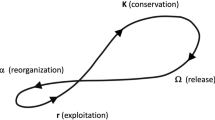Abstract
Ideologies, and especially the choices that are rooted in ideology, have profoundly influenced the shaping of the Oregon country as it exists in the late twentieth century. “All human groups,” the historian William Cronon argues, “consciously change their environments to some extent.” During the last two centuries, the successive cultural groups occupying the Pacific Northwest inhabited landscapes that have been shaped, to some degree, by previous dwellers. Each of these cohorts, operating from a deeply rooted cluster of beliefs and values, has shaped the land around them. It is impossible to understand the vast biological and other modifications that have taken place in the Oregon country without looking far beyond the region. Of particular interest is the introduction of a sometimes spectacular system change — the making of the landscape of a planting society — as human cultural practices moved from subsistence to commercial behavior, and as the Northwest became integrated into national and international market relations.
Similar content being viewed by others
References
Berger, P. 1986. The Capitalist Revolution: FiftyPropositions about Prosperity, Equality, and Liberty. Basic Books, New York.
Boyd, R. 1990. Demographic history, 1774-1874,p. 137. In: Sturtevant, W.C. (Ed) Handbook of North American Indians (volume 7). Smithsonain Institution Press, Washington, DC.
Cronon, W. 1991. Nature's Metropolis: Chicago and theGreatWest. W.W. Norton, New York.
Crosby, A. 1986.Ecological Imperialism: The Biological Expansion of Europe, 900-1900. Cambridge University Press, New York.
Ficken, R.E. 1987.The Forested Land: A History of Lumbering in Western Washington. University of Washington Press, Seattle.
Hirt, P. 1994. AConspiracy of Optimism: Management of the National Forests Since World War II. University of Nebraska Press, Lincoln.
White, R.1980. Land Use, Environment, and Social Change: The Shaping of Island County, Washington. University of Washington Press, Seattle.
Wilkes, C. 1899. The correspondence and journals ofCaptain Nathaniel J. Wyeth, p. 148. In: Young, F.G. (Ed) Sources in Oregon History. University Press, Eugene.
Worster, D. 1979. Dust Bowl: The Southern Plains in the 1930s.Oxford University Press, New York.
Author information
Authors and Affiliations
Rights and permissions
About this article
Cite this article
Robbins, W.G. Ideology and culture in the Oregon country: the landscapes of planting society. New Forests 18, 89–96 (1999). https://doi.org/10.1023/A:1006510209077
Issue Date:
DOI: https://doi.org/10.1023/A:1006510209077




